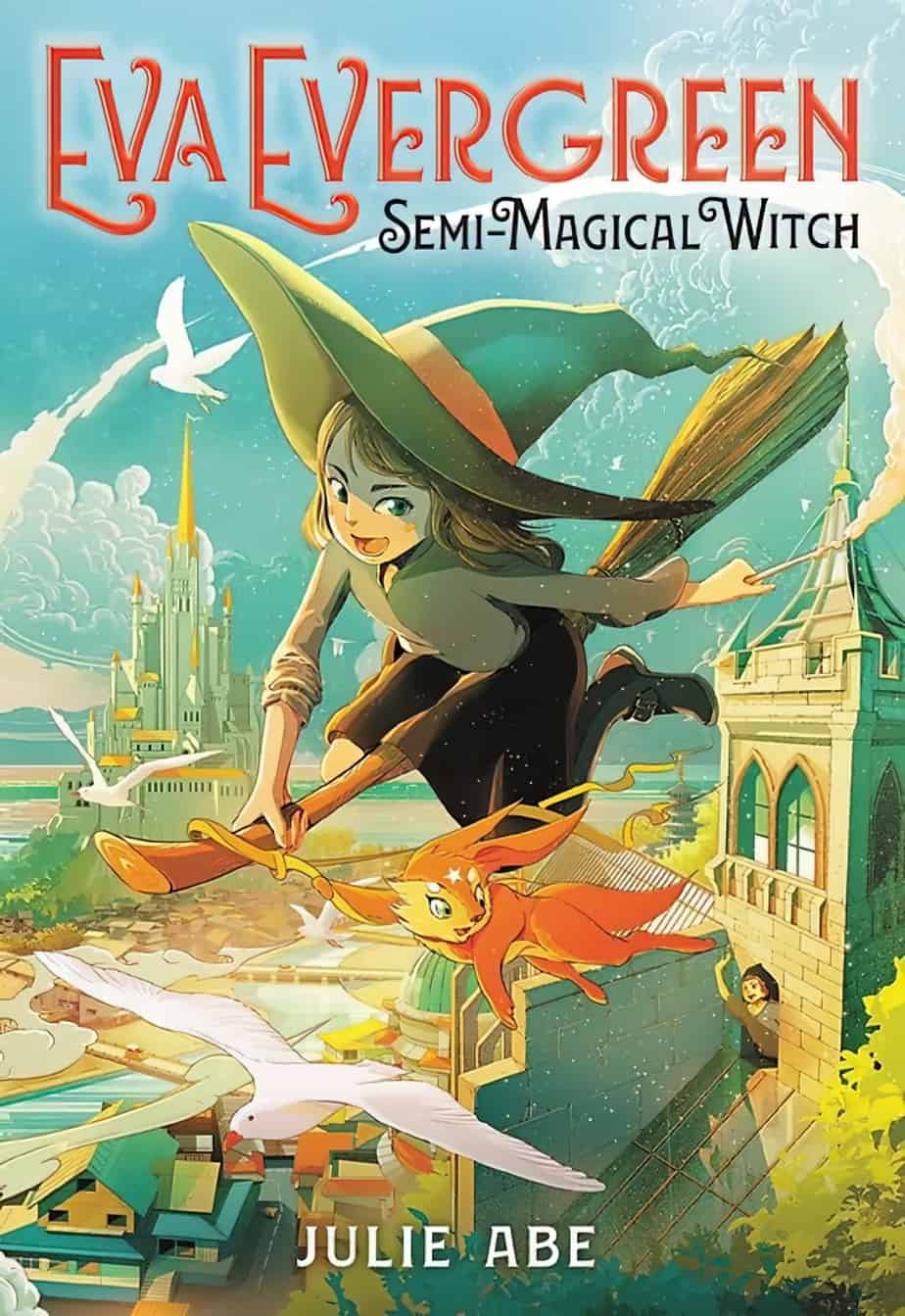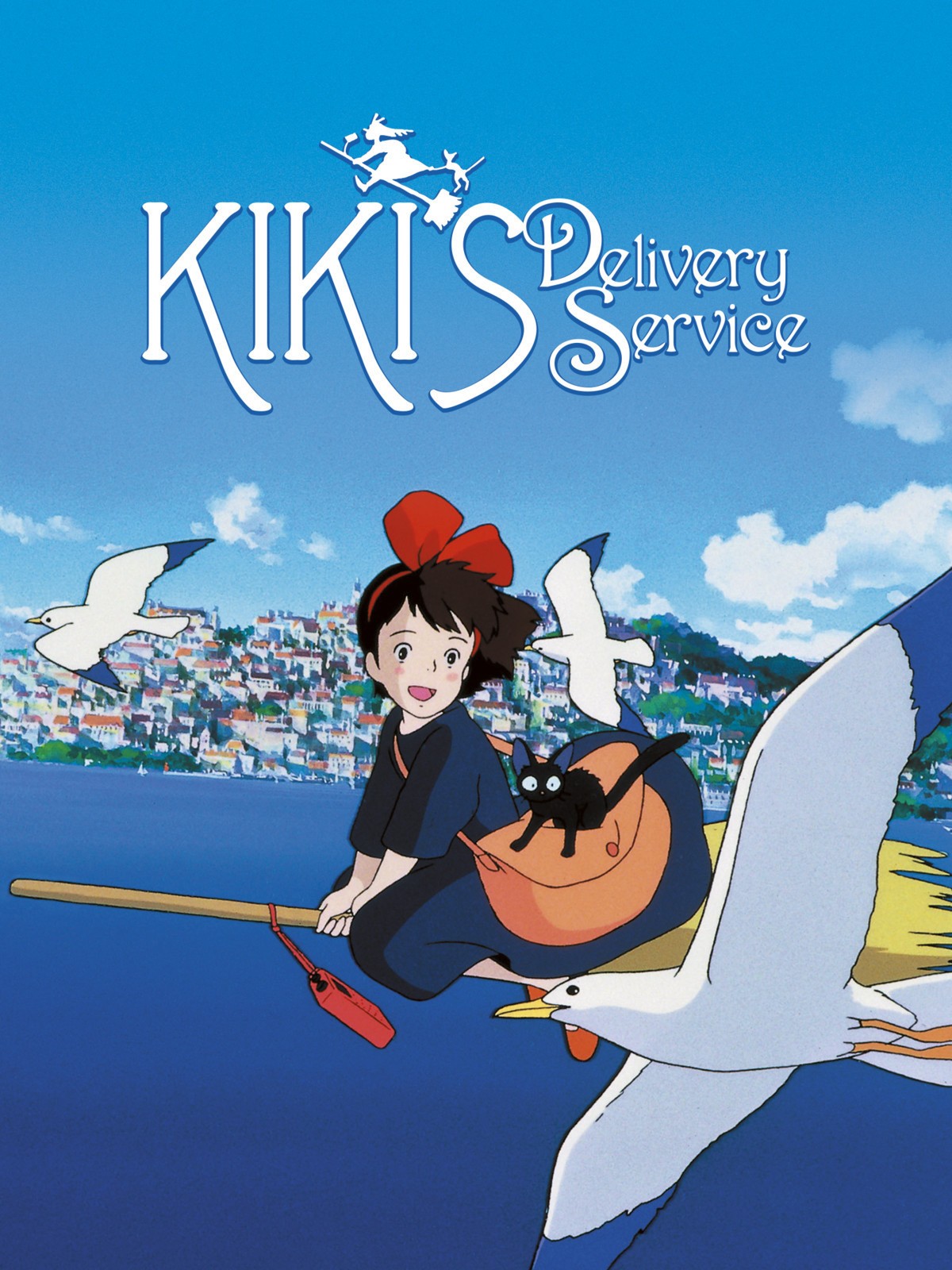Kiki’s Delivery Service is a Studio Ghibli film released in 1989. This film was always popular in Japan but — though it’s hard to remember now — Studio Ghibli films didn’t take off in the West until 1997 with the release of Princess Mononoke.
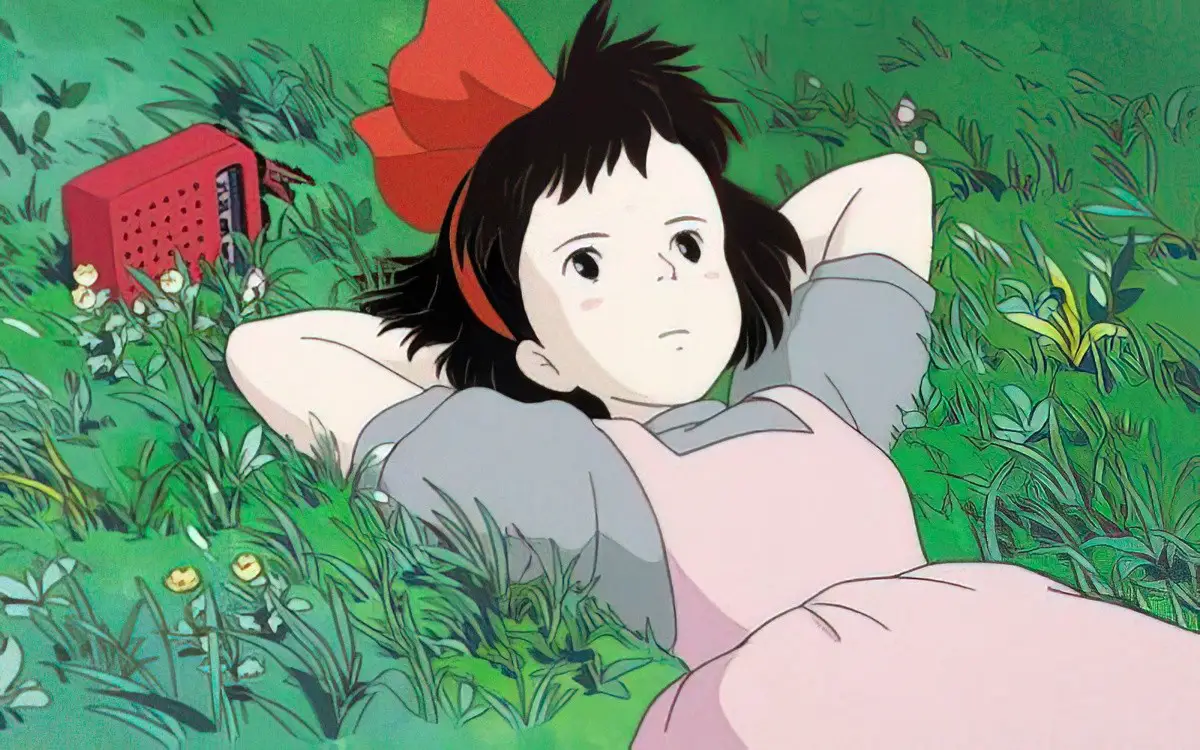
BASED ON A POPULAR JAPANESE CHILDREN’S BOOK
Kiki’s Delivery Service is based on a novel published in 1985 by Eiko Kadono. Kiki’s Delivery Service is Kadono’s best known work. Like L. Frank Baum, she really only had this one big hit and wrote lesser known sequels which are lesser known. (There are 6 in the series altogether.) As of 2017, Kadono is 81 years old.
Hayao Miyazaki is 76. The film therefore has the combined sensibilities of a Japanese pair of artists born around the time of the World Wars. This affects both the setting and the sentiment.
“Just follow your heart and keep smiling,” advises the mother before Kiki sets off. This feels like not only a distinctly Japanese thing to say, but also an especially feminine aspiration, though probably applied to everyone in Japan born after the war.
SETTING OF KIKI’S DELIVERY SERVICE

Visby is a town on the Swedish island of Gotland in the Baltic Sea. It’s known for its well-preserved town wall, a medieval fortification incorporating defensive towers. The town’s many churches include the grand, centuries-old St. Mary’s Cathedral and the medieval ruins of St. Nicolai and St. Karin. The main square, Stora Torget, has cobblestone streets lined with cafes and restaurants.
Where are these Miyazaki films set? Not in Japan but not in Europe, either. The utopian setting of Kiki’s Delivery Service (and several of the other Studio Ghibli films) has the trains, the hilly suburbs and the closeness of the sea but also has the cobbled streets and nooks and crannies of somewhere like Barcelona, with intratext on the signs looking a lot like English with a few flourishes reminiscent of kanji. We are to believe this is another world, a world where magic exists unobtrusively in the real world of the story.
[Studio Ghibli] shot 80 rolls of film in Stockholm and Visby, gathering location images as inspiration for the scenes in Koriko. For the most part, Koriko is composed of images of Stockholm. A side street in Stockholm’s old city, Gamla Stan, is one model. Sweden was the first foreign country Miyazaki ever visited.
Fictional Koriko is, however, much larger than Visby and features buildings and shops with the look of Stockholm.
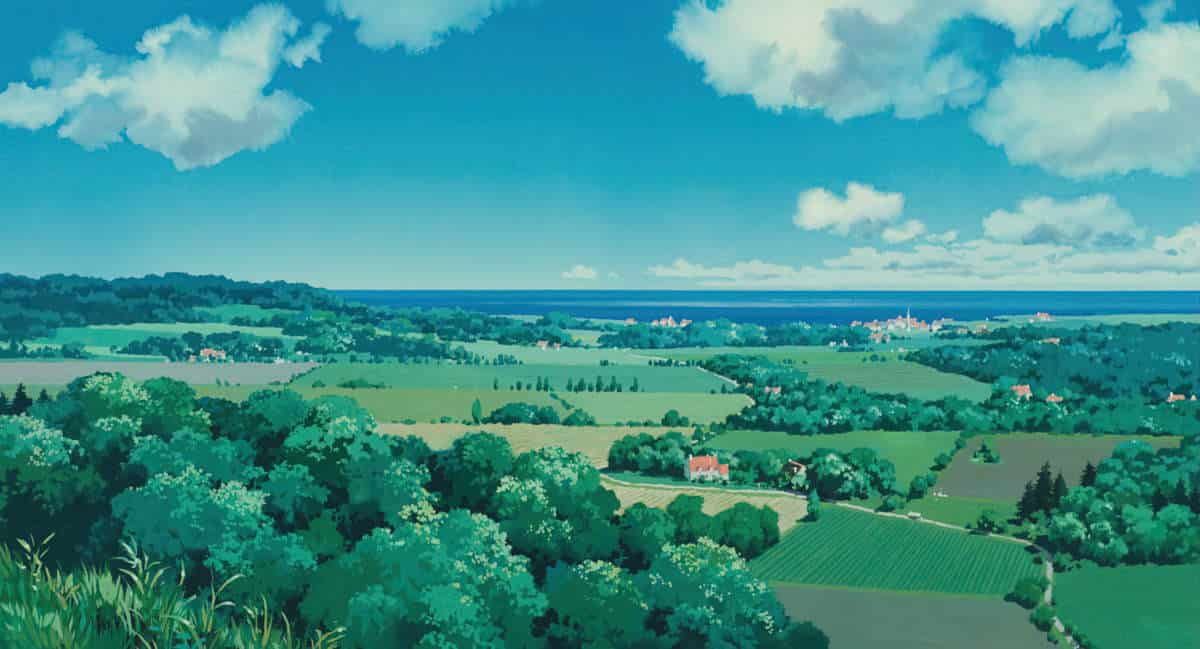
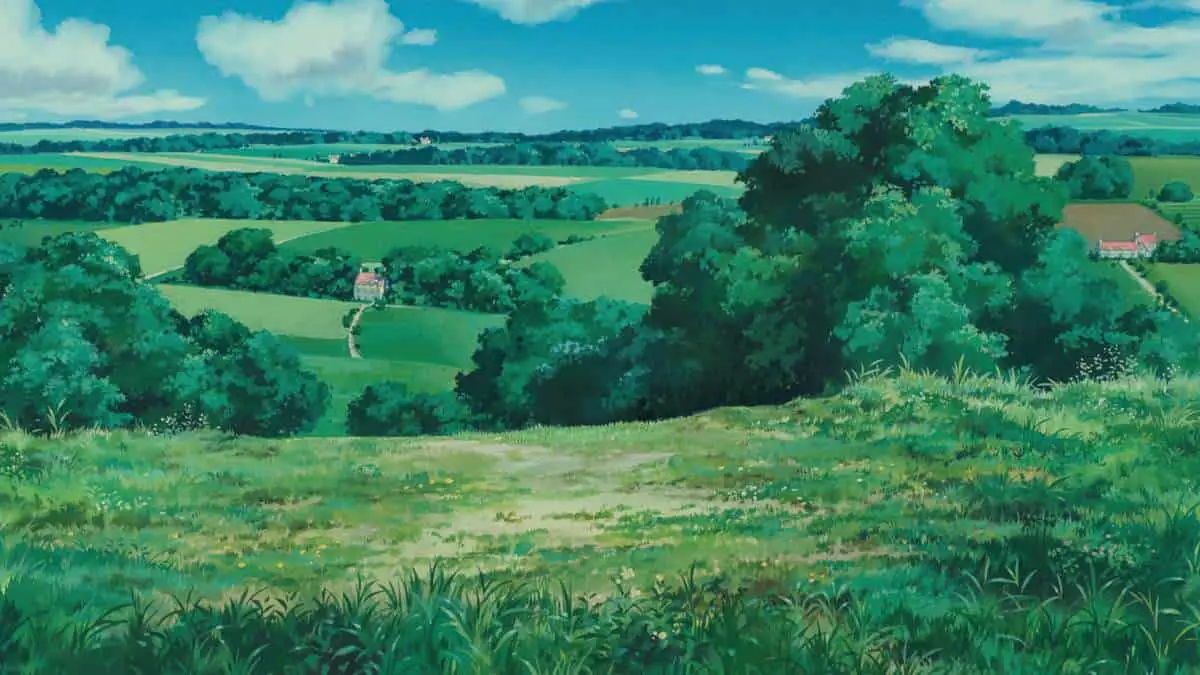
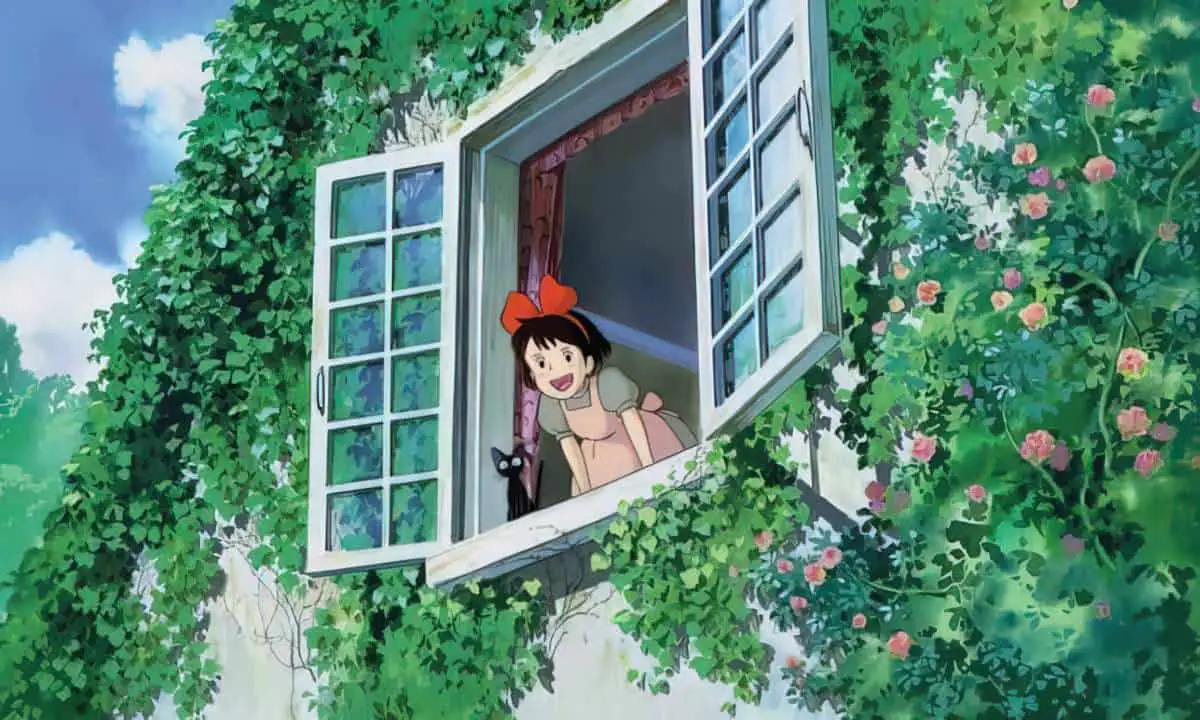
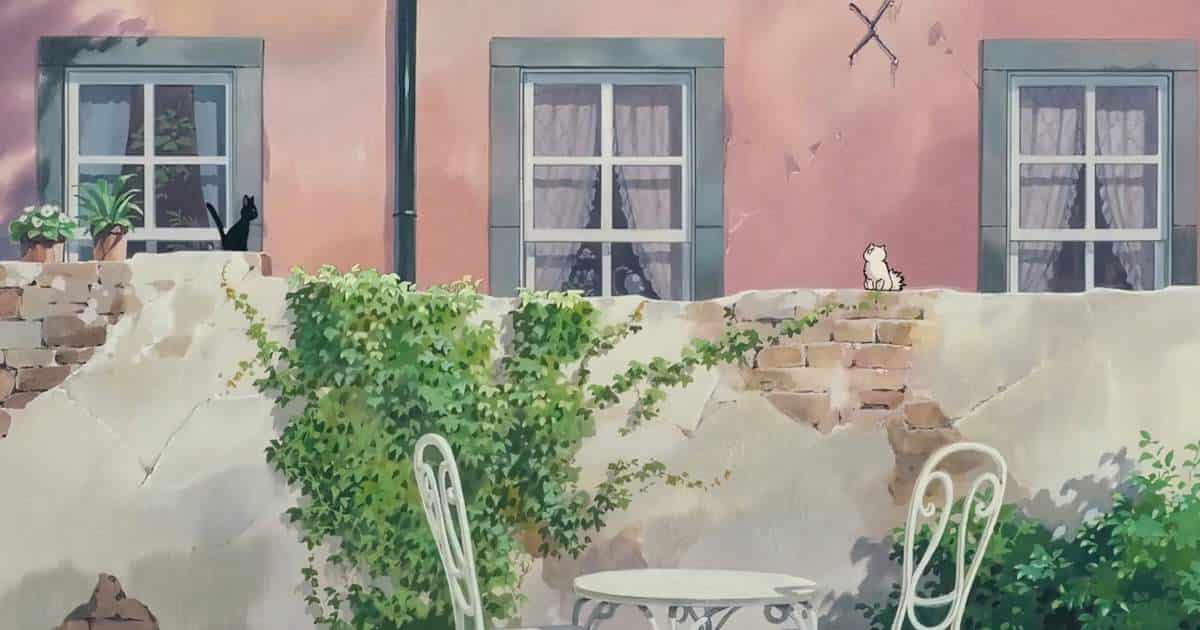
PARATEXT
THE TITLE
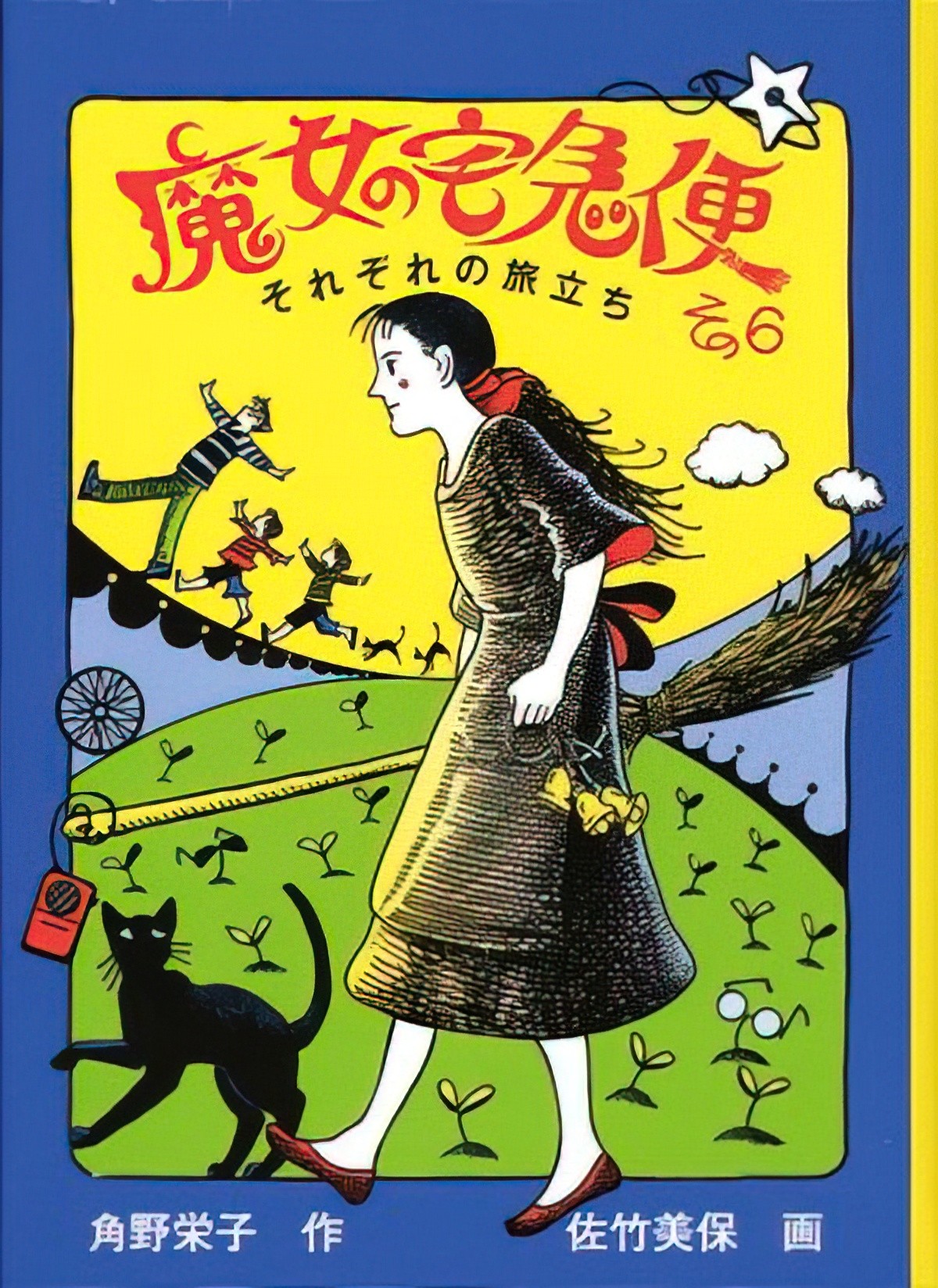
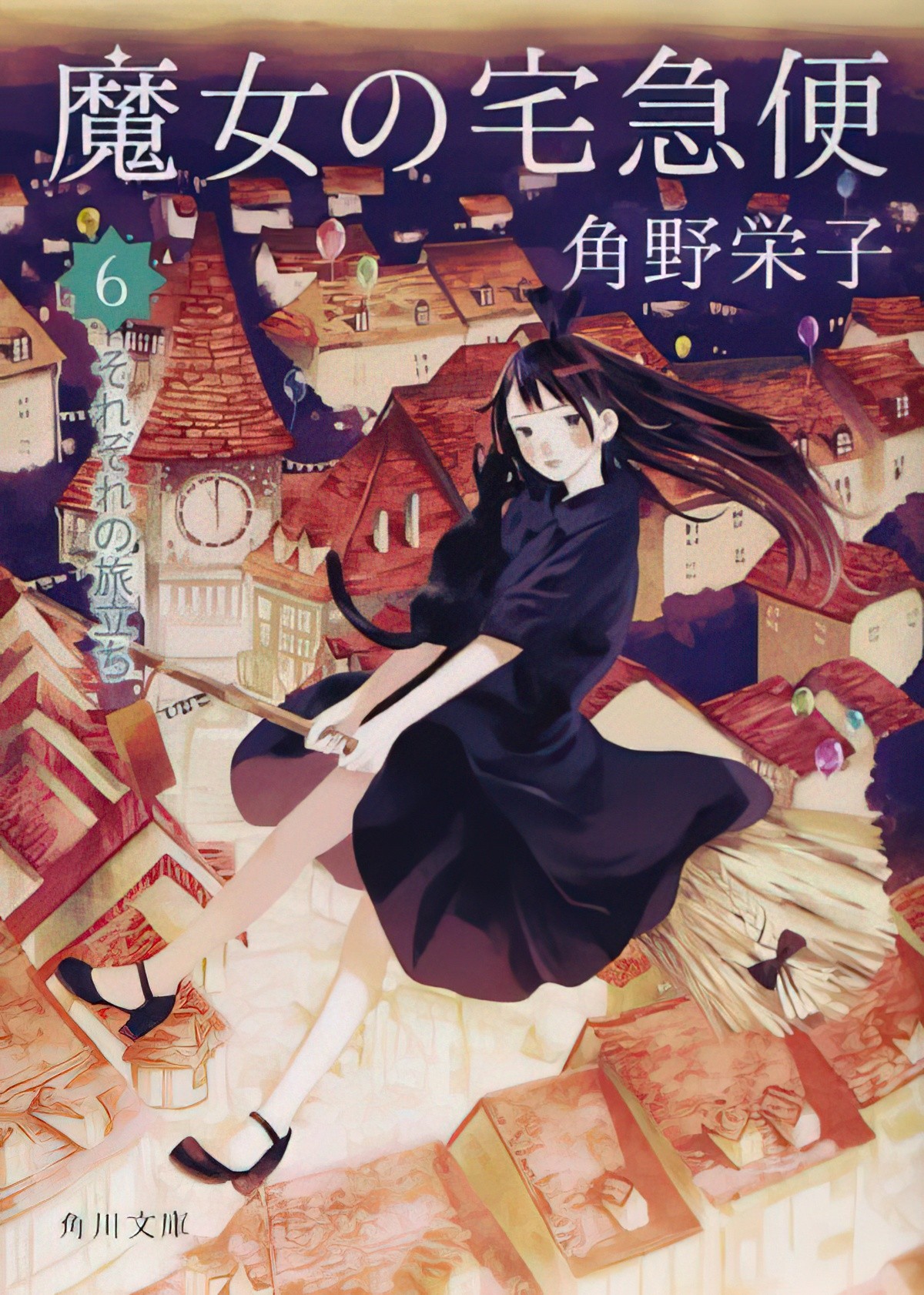
The original Japanese title (both book and film) means ‘Witch’s Delivery Service’ which was personalised for the English film adaptation. I suspect this is because Western children have a slightly different set of expectations surrounding the witch trope. In the West, witches are the opponents and they are often genuinely scary and dangerous. This is a utopian story, and although Kiki is a witch, there’s not much witchy about her apart from her ability to fly on a broom. She is first and foremost a regular girl.
That said, Japanese mythology is not short on witches, oh far from it. But the scary woman Western children associate with the word ‘witch’ has most often got the word ‘baba’ in it (which loosely translates as ‘old hag’). For instance:
- The amazake-babaa, who asks for sweet sake (mirin) and brings disease
- The mikaribaba who has one eye — she visits your home and borrows sieves and also human eyes!
- The Onibaba — a demonic hag from Adachigahara
Others are more benign and strangely specific:
- Hikeshibaba extinguishes lanterns
- Sunakake Baba sprinkles sand about
Also, I feel the creators did intend the Western version of the witch. At one point there is lampshading about why the crows are attacking her. Gigi points out that crows used to be witches’ allies. Kiki points out that “That was a long time ago!”
EPISODIC STRUCTURE IN KIKI’S DELIVERY SERVICE
The subtitle of Kiki’s Delivery Service means something like ‘Various Leapings’. This is an adventure story where Kiki undergoes a single, sustained character arc but it is also somewhat episodic, like Anne of Green Gables and other middle grade books for/starring girls.
Each delivery — and they tend to go a bit wrong — turns into an episode. I imagine these formed chapters in the original book. This affects pacing, of course, because the audience needs to see something’s at stake, and drama must escalate until the denouement. Eventually the ticking clock is used to amp up the tension — Kiki must make a delivery before Tombo comes to pick her up for the party at 6 o’clock. She doesn’t make it, and the audience is invited to share in Kiki’s pain.
MAGIC REALISM IN KIKI’S DELIVERY SERVICE
Magical realism, in other words. We first see Kiki as she prepares to take off for her one year stint away from home. Via backstory delivered by an old woman (the grandmother?) talking to the mother we learn that witches must spend a year away from home as part of their training. It’s tradition. Kiki is 13 — a transition age in literature as well as in life — and must wait for the right winds and a full moon before taking off. There’s something almost Amish about this tradition and, like many documentaries about Amish communities, we are left with a feeling of hygge.
A GENUINE UTOPIA
Kiki’s Delivery Service has an underlying theme of how the world is rapidly changing.
@BigMadDraco on Xitter
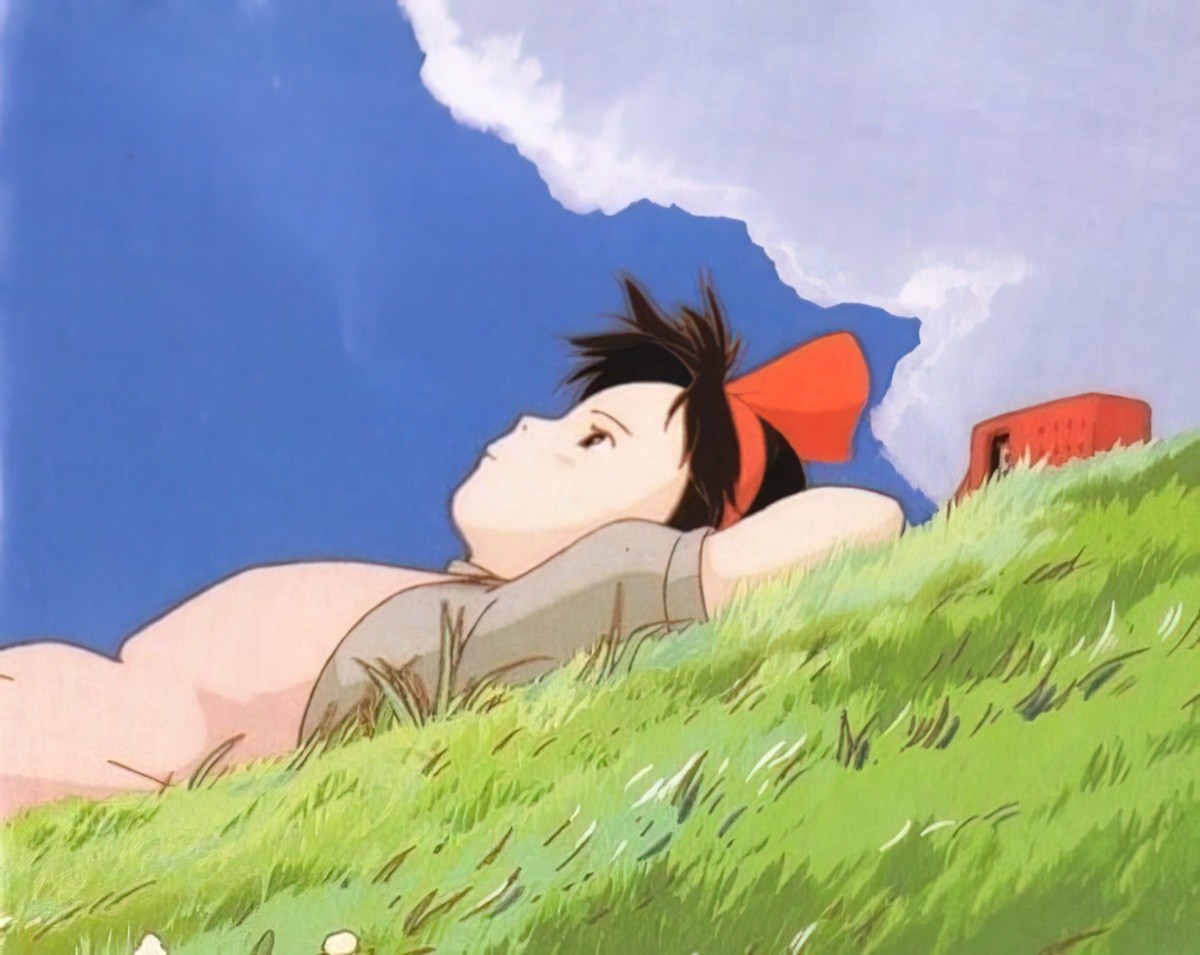
The entire homestead is hygge, with healthy vines growing up the sides of a thatched roof house, and a vibrant, healthy garden. This is the dream house as described by Gaston Bachelard, with Kiki’s bedroom on the top floor — a gabled ceiling adding to the cosiness.
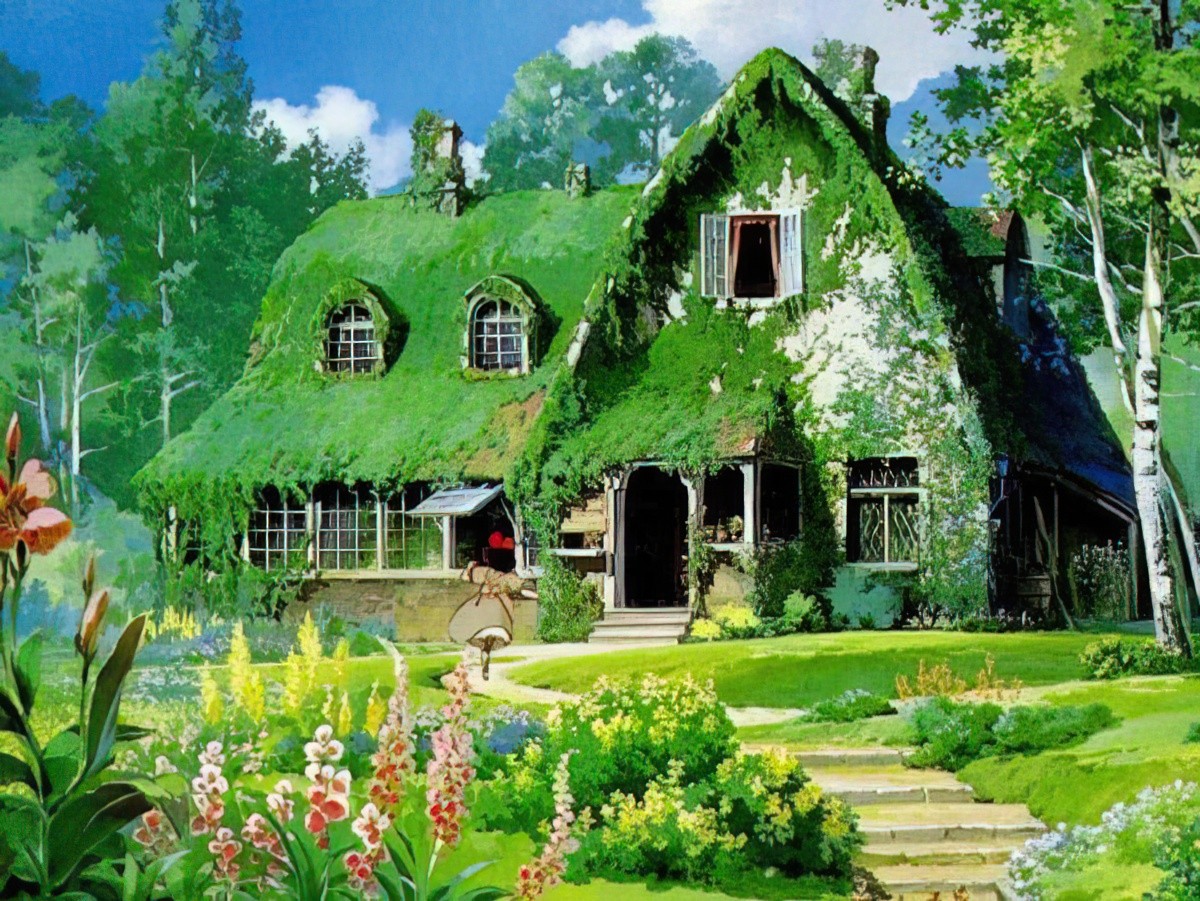
It’s the sort of film which inspires diorama enthusiasts to make scenes such as this:
You can even buy wall art like this:
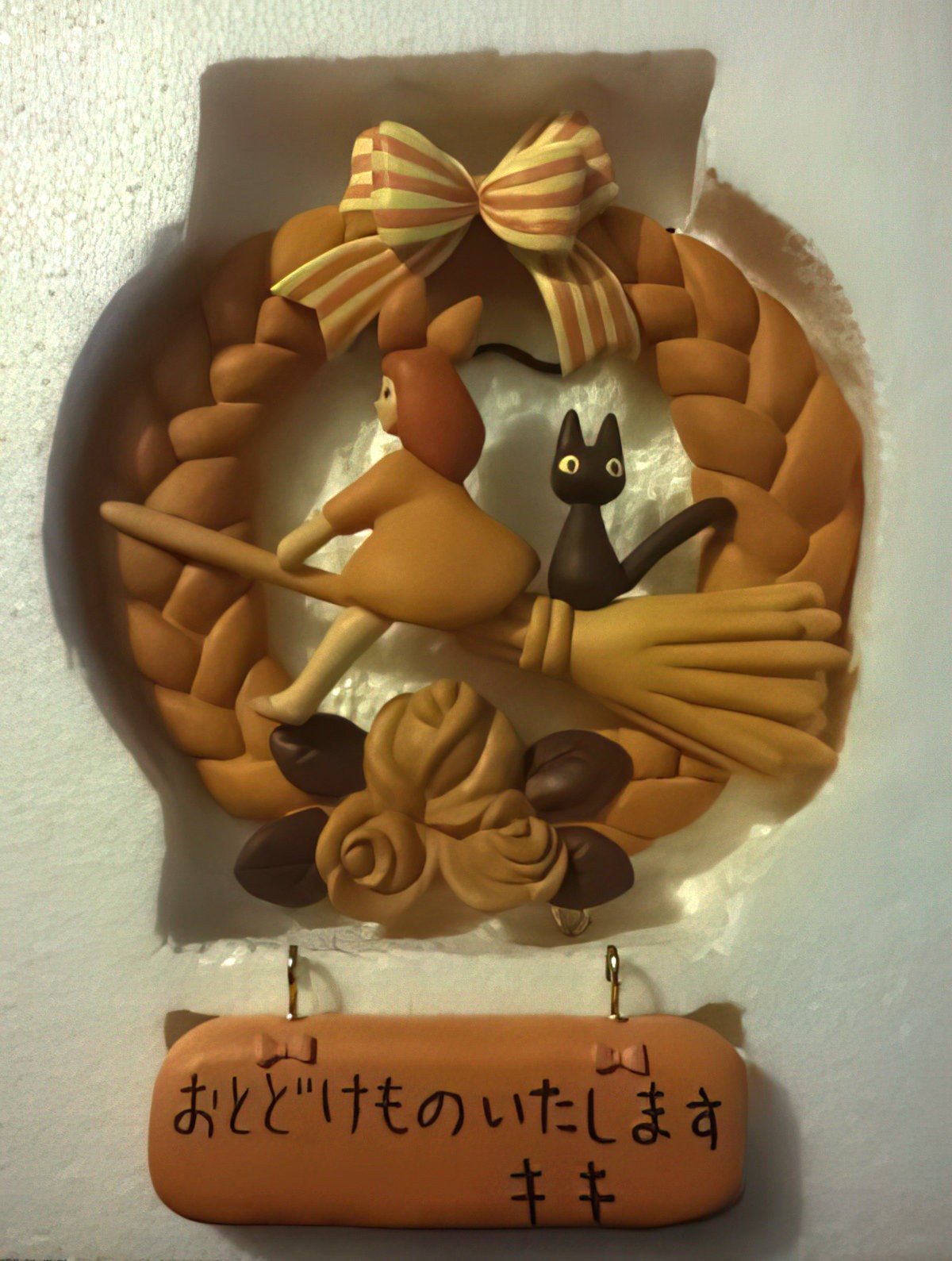
DESIRE AND SHORTCOMING
Kiki’s desire line is introduced right away as she rushes inside to tell her mother she’s leaving, having listened to the weather.
Next we get a small insight into her psychological shortcoming — she gazes at herself in a full-length mirror and is disappointed in her dress. Kiki is shown to be overly concerned about the colour of her black dress. This will be her downfall. Modern believers in the nurture theory will also note with interest that the father treats his 13 year old daughter like a toddler — partly for old time’s sake, throwing her up in the air — but also calls her his ‘princess’ (at least in the English dub). Kiki has been nurtured in a way that makes her fussy about clothes.
Kiki also has a practical shortcoming — she isn’t that great at flying. This is a great shortcoming to have as it allows for plenty of nail-biting scenes as she loses control of her stick. It’s made even worse when the mother insists she take the old broom rather than the one she’s been practising on.
AN ODYSSEAN MYTHICAL STRUCTURE
There are three main types of mythic structures and Kiki is of the Odyssean kind, in which a hero (in this case a little girl rather than the usual man) leaves home, encounters a variety of characters, learns more about herself then returns home (or finds a new one). It’s a structure as old as the hills, and popular with audiences worldwide. This explains why this Japanese story is popular with other audiences.
THE CHARACTERS KIKI MEETS ON HER JOURNEY
A shortcoming of the Odyssean structure is that — at least to this modern viewer — it can feel like one damn opponent after another. Then, of course, there’s the big big struggle. It gets a bit ho-hum. Here’s the other thing: in a utopian children’s story there can’t really be any genuine opponents. What have we got instead?
The first opponent is a classic dynamic in a girls’ story — Kiki encounters the snooty, slightly older witch who rejects Kiki as being from the country.
This is swiftly followed by the weather, which the radio said was going to be perfect but turns into a storm. (Later in the story we have a heavy rain — the kind of rain that a Japanese audience is used to, as it rains like that every June during ‘rainy season’.)
The cows who lick Kiki’s foot at first might be angry but turn out to be benign (and humorous). By the way, this is a classic fairy tale trope — hiding in a haycart to escape. A maiden escapes her psychopathic groom in the Bluebeard tale collected by the Grimms — “The Castle Of Murder”. Obviously, this children’s tale is a lot more benign than that.
When Kiki reaches Koriko the townspeople are not friendly. They haven’t seen a witch in many years and don’t know what to make of her. They don’t flat out reject her, either. The overall hostile feeling is symbolised by the policeman, who tells her to be careful flying her broom otherwise it’s a traffic violation.
Tombo — making use of dramatic irony — is instantly attracted to Kiki but Kiki’s main psychological shortcoming comes to the fore and she rejects him as some sort of enemy. Tombo is actually an ally, but a romantic opponent. Middle grade stories often have a romantic subplot — this one is mirrored by the romance betwen Gigi and the white cat next to the bread shop. The ‘romance’ is based on the shared interest of flying, and is really just a deep friendship. The two will only get together after they have been shown to be equals.
It is only after making Kiki suffer through all of this opposition that she gets a lucky break and meets the pregnant owner of a bread shop who takes Kiki under her wing as a not-quite-mother figure (the mythical mentor, to use Joseph Campbell’s terminology). Asono is in danger of becoming a bit too ingratiating, telling Tombo not to phone back (even though Kiki secretly wants him to), but we find out in a subsequent scene that in fact Asono has Kiki’s number — she orchestrates them getting together in the end.
Asono’s husband is a huge, strong man who doesn’t say a word and at first we might wonder if he is an opponent. We first see him from Kiki’s viewpoint as she tries to exit the outhouse one morning. Here’s a bit of Japanese culture worth mentioning: In Japan (with women, for sure), when you’re in the toilet cubicle you are anonymous. No talking to your friends between stalls in malls or any of that business. Don’t try to talk to someone who’s sitting on the can. This scene with Kiki makes more sense if you understand it’s embarrassing for a girl to be seen by a man exiting a toilet. (Girls don’t poop, or something.) However, we soon see this guy wink at Gigi, showing off about how well he can spin buns on a tray. He makes that sign for Kiki’s business — a beautiful creation made of glazed bread. This is a laconic giant with a heart of gold.
Some of the delivery recipients are nice; others are haughty. There is a direct correlation between rich, ostentatious houses and haughty, ungrateful people — another moral lesson. The dopey dog turns out to be an unwitting ally — and a great comic character. (Both horror baddies and comical characters are robotic, acting as if they’re not allowed to deviate from some script. When the big dog delivers Gigi safely outside it’s because he’s been told to and he has no real choice.)
Kiki’s confidante turns out to be a slightly older woman, living on her own, sketching by day. She is more confident than Kiki, both sexually and otherwise. She doesn’t appear to be so friendly at first, making Kiki wait while she finishes her sketch before Kiki can finish her mission. But sometimes people who are not overly friendly turn out to be the best of friends (in romantic plots as well as in friendship ones). It is indeed this older friend who leads Kiki to have her own anagnorisis. After a speech about needing inspiration in order to create, Kiki says, “Maybe I have to find my own inspiration.” There we have it, the character arc. Now she just needs to make good with Tombo.
The snobby, well-dressed girls are mostly opponents inside Kiki’s imagination, as she feels she is not as pretty as they are. Also, they are spending time with Tombo. She wishes she were them, in some ways.
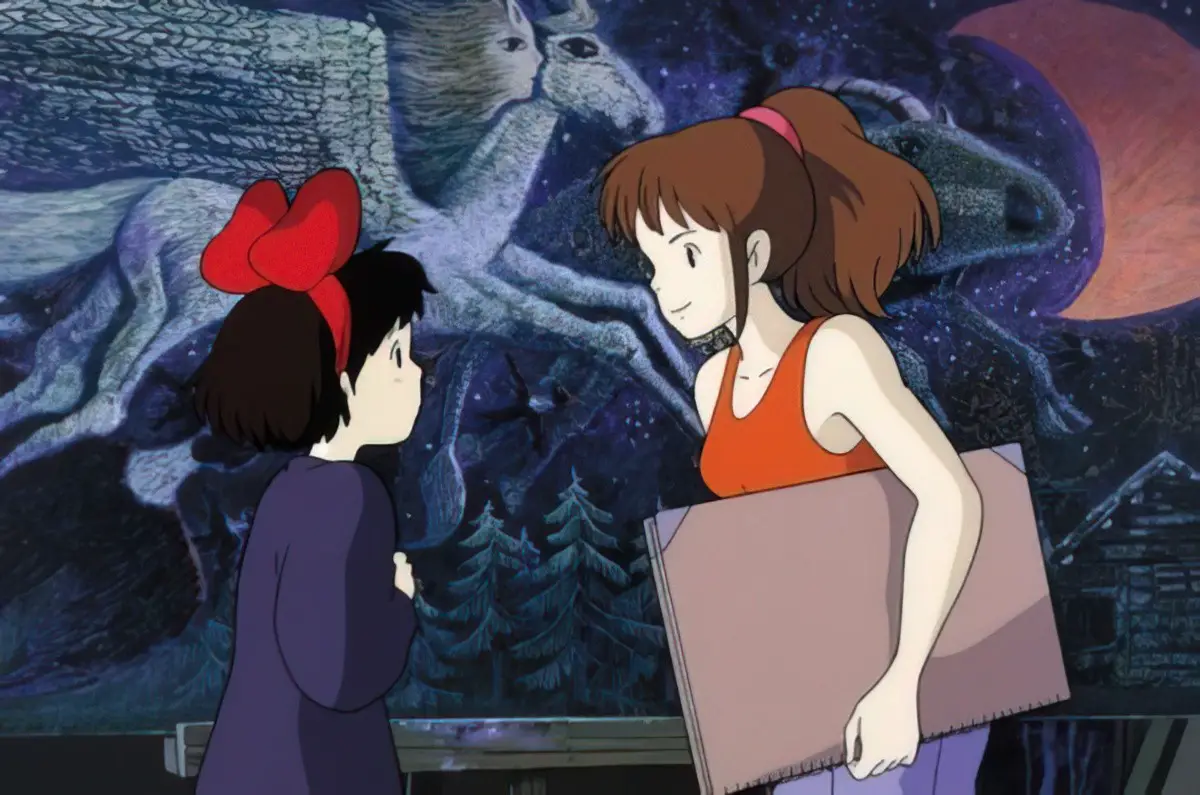
TOMBO
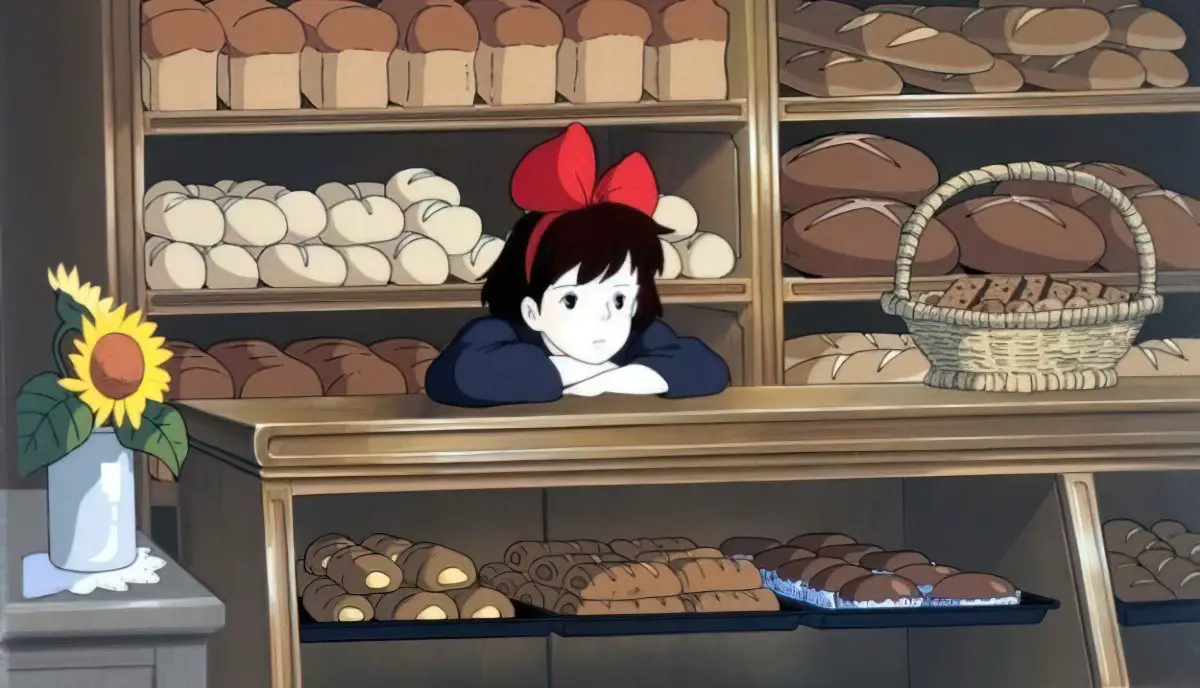
Tombo is probably a nickname, because in Japanese it means ‘dragonfly’. Dragonflies are a common sight in a Japanese summer and if you watch a lot of anime you’ll already have noticed that for a Japanese audience the dragonfly is strongly associated with summer, and laidback atmospheres.
The dragonfly has the most impressive flying mechanics found in all of nature, and human technology has not yet been able to replicate its ability to duck and dive — the tombo has the most exquisite control.
GIGI THE CAT
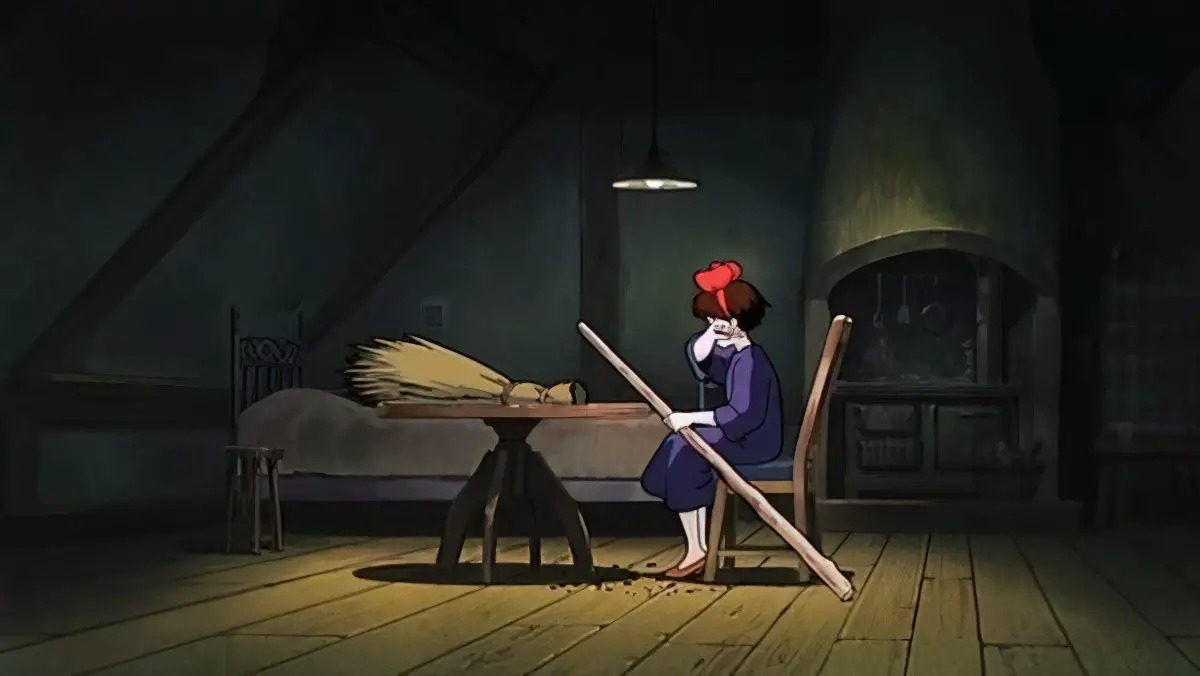
The cat character serves three main purposes:
- His sardonic tone moderates what might otherwise be a saccharine story.
- The romantic subplot, which is mirrored by Kiki and Tombo
- Symbolically, Gigi is Kiki’s inner voice. We hear via Gigi what Kiki is really thinking even as she tries to remain upbeat and ‘keeping on smiling’, as advised by her witch mother. This explains why Kiki loses the ability to understand Gigi. She has lost a part of herself, in turmoil, unable to express her liking for Tombo, hindered by her own pride (a psychological shortcoming reminiscent of Pride And Prejudice*, in fact).
*Also like in a Jane Austen novel, the heavy rain gives Kiki a cold, which sends her to her (psychological death) bed.
WORK HARD IN ORDER TO FIND YOURSELF
This is the particularly Japanese principle underlying Kiki’s Delivery Service, one which Hayao Miyazaki must like, because he used it in Spirited Away (after pulling himself out of ‘retirement’ to make it… This says something about Miyazaki’s work ethic).
Kiki helps out at every opportunity. She lends a hand in the bakery, she goes above and beyond to help the old woman cook a herring pot pie for her ungrateful granddaughter, and she will go to the ends of the earth before disappointing someone by failing to make a delivery, even when the rewards are little.
This is closely related to the Japanese concept of omotenashi, which basically means ‘hospitality’, but goes much further than that. It refers to the specifically Japanese virtue of paying such close attention to your guest that they want for nothing, all the while expecting nothing in return. (I guess this is related to a Buddhist aspiration to be neither overly happy nor overly sad however things turn out.)
THE SYMBOLISM OF FLIGHT
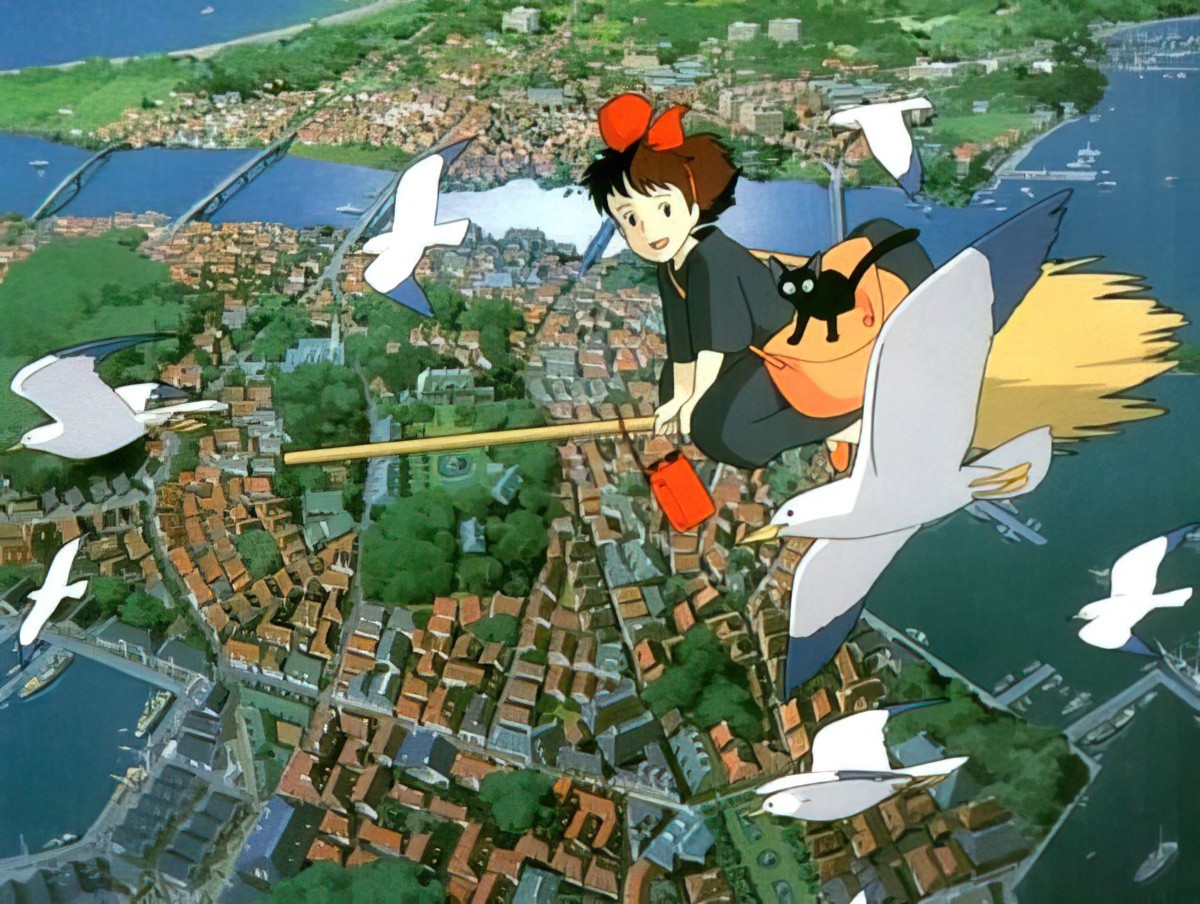
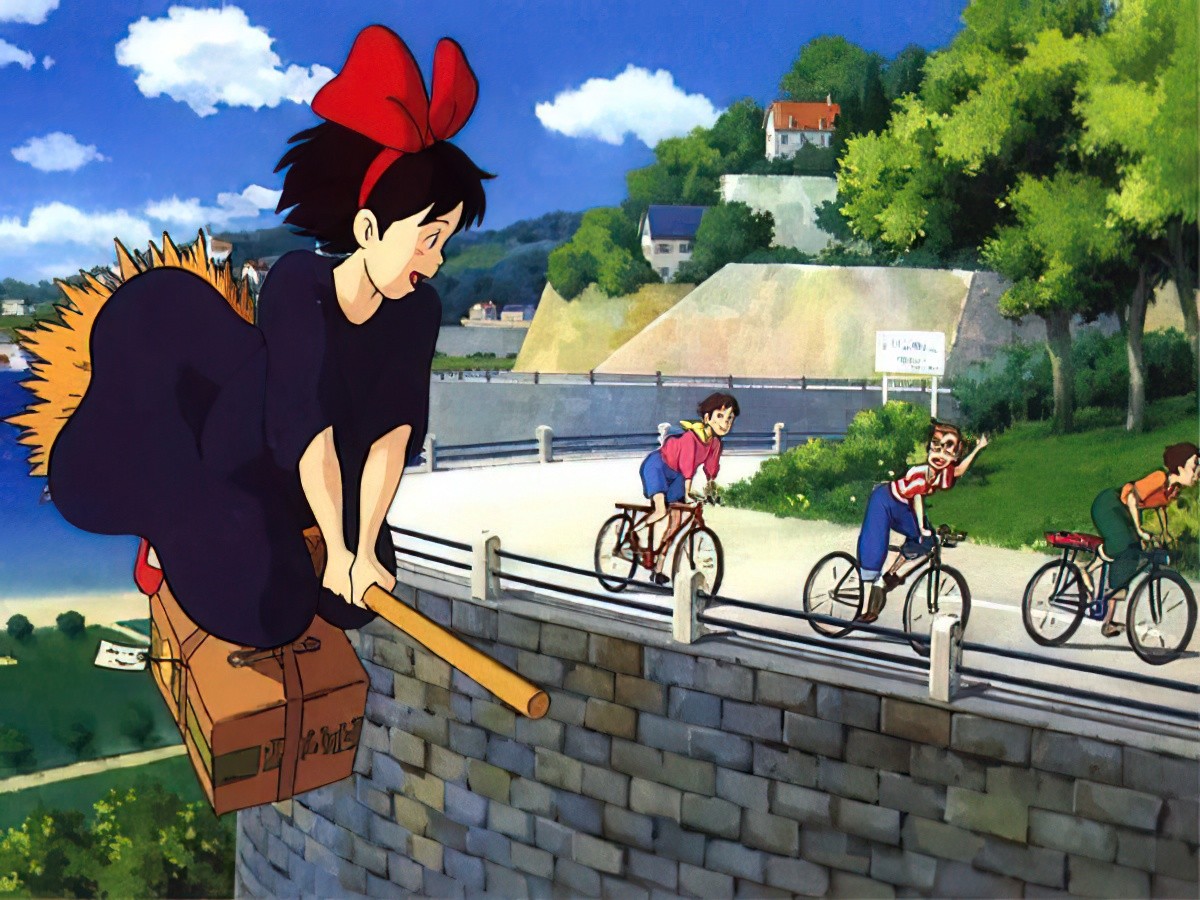
Flight is very popular in children’s stories and most fantasy will include a spell in the air, through whatever means. In fact, the closer you look, the more likely you will conclude that a successful utopia requires flight.
Here, flight obviously represents freedom. But as in all symbols, the ability to fly can also be symbolic of ‘failure to fly’, or failure to take advantage of one’s freedom. (If anyone flies or falls for too long, Icarus and his imaginary cousins are probably being invoked.)
THE FINAL BIG STRUGGLE
There are a number of battles, culminating in Kiki’s rescuing Tombo as he hangs suspended from the dirigible, which crashes into the clock tower.
This is a welcome girl friendly message — not many Hollywood children’s films star girls, and girl stars don’t often come to the rescue of boys. In Tombo we also have a bit of a ‘manic pixie dream girl’, which is also a change for a Western audience.
The rescue scene follows a ‘riding bitch’ scene which Miyazaki seems to have a penchant for; you know, the bit where the girl gets on the back of a bike and the boy leads the way.
These two scenes combined show us that Tombo and Kiki are equals — they both love flying, each have a lot more to learn about it, each find themselves in perilous situations occasionally, and if only Kiki can admit to herself that she likes Tombo, they’re equally cheerful and fun.
